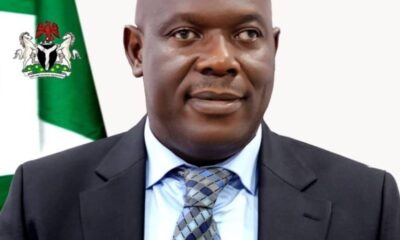Oil & Energy
Indigenous Operators Produce 30% Of National Crude Output ……. NUPRC ….As Commissioned Otakikpo Export Terminal Boasts 750,000 Barrels Storage Capacity

He credited the project’s success to progressive policies under the Renewed Hope Agenda of President Bola Ahmed Tinubu, and reforms instituted by the Petroleum Industry Act (PIA).
Expressing gratitude to the financial community and fellow Exploration and Production (E&P) operators, Adegbulugbe emphasised that the commissioning of Otakikpo is just the beginning of a broader transformation of the energy sector.
He urged industry stakeholders, government, and investors to capitalise on this momentum and fully realise Nigeria’s vast energy potential for national development.
The Otakikpo Terminal, commissioned in Rivers State by President Bola Ahmed Tinubu on Wednesday, October 8, 2025, is not only a landmark achievement that would transform the country’s upstream oil and gas sector but a game-changer for crude export capacity and a bold demonstration of Nigeria’s evolving energy landscape, where indigenous operators are taking centre stage in securing the nation’s oil and gas future.
Oil & Energy
TotalEnergies, Conoil Sign Deal To Boost Oil Production

Oil & Energy
“COP30: FG, Brazil Partner On Carbon Emissions Reduction

Oil & Energy
DisCo Debts, Major Barrier To New Grid Projects In Nigeria ……. Stakeholders

-

 Featured1 day ago
Featured1 day agoOil & Gas: Rivers Remains The Best Investment Destination – Fubara
-

 Nation2 days ago
Nation2 days agoOgoni Power Project: HYPREP Moves To Boost Capacity Of Personnel
-
Nation2 days ago
Hausa Community Lauds Council Boss Over Free Medical Outreach
-
Nation2 days ago
Association Hails Rivers LG Chairmen, Urges Expansion Of Dev Projects
-
Nation2 days ago
Film Festival: Don, Others Urge Govt To Partner RIFF
-
Rivers2 days ago
UNIPORT Moves To Tackle Insecurity … Inducts Security Experts
-

 News2 days ago
News2 days agoNDLEA Arrests Two, Intercepts Illicit Drugs Packaged As Christmas Cookies
-
Nation1 day ago
MOSIEND Calls For RSG, NDDC, Stakeholders’ Intervention In Obolo Nation

